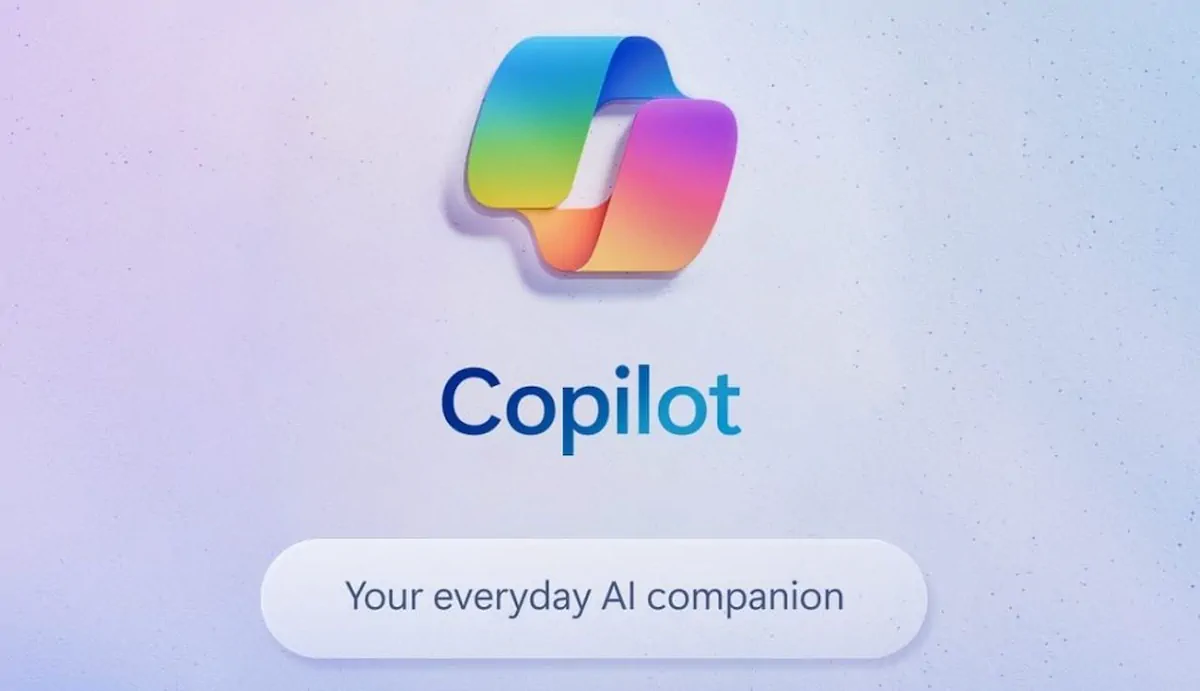Ever opened Word and stared at the blank blink of a cursor, unsure where to start? Or sat through a Teams call trying to juggle note-taking, follow-ups, and your actual job?
Yeah, same here.
That’s why this new update from Microsoft Copilot might hit different. It isn’t just “smarter AI” or “fancier suggestions.” This is a full-blown switch from passive helper to proactive partner.
Copilot isn’t sitting around waiting for you to ask it to do something anymore—it’s already on it. While you’re writing in Word, it’s pulling meeting insights from Teams. When you’re planning a task in Outlook, it’s already grabbing the right docs from OneDrive.
For everyday users trying to do more with less time, this shift could mean saving hours a week. For enterprises, it might mean thousands of dollars saved in workflow lag.
Let’s break down exactly what’s changed—and why you should actually care.
What Is Microsoft Copilot?
Think of it as your AI sidekick, built right into the Microsoft tools you already use—Word, Excel, Teams, Outlook, and more.
When Microsoft launched Copilot, it had a simple pitch: help users finish work faster with AI that writes, summarizes, and automates tasks.
Initially, that looked like:
- Auto-drafting emails in Outlook based on past communication
- Building quick summaries from meeting transcripts in Teams
- Suggesting Excel formulas based on your typing
That got people’s attention. But it still felt reactive. You had to ask for help.
This update flips the script. Copilot isn’t just responding—it’s reading the room, analyzing your workflow, and jumping in where it sees opportunity. Less like Clippy. More like your smartest teammate.
Why Is This Update Significant?
Here’s the game-changer: Copilot isn’t sitting idle on the sidelines. It’s now predicting pain points and stepping in before you even hit a wall.
Instead of waiting for a prompt, it actively scans your context—recent chats, open files, project deadlines—and offers suggestions tailored to your actual life, not just a static template.
This upgrade dials into the full Microsoft ecosystem. Say you’re working on a presentation and a report simultaneously. Copilot connects the two. It pulls real-time data from your Excel doc, suggests structure for the deck, even drafts speaker notes—all without a single ask from you.
Here’s what that could mean for people like us:
| Before Update | After Update |
|---|---|
| Manually summarizing meetings | Copilot autogenerates summaries across Teams and Word |
| Switching apps to gather info | Unified insights pulled from wherever you work |
| Asking for help one task at a time | Copilot offers end-to-end workflow support proactively |
The takeaway? It’s not just a better tool. It’s a fundamentally new way to interact with Microsoft’s core products.
Context-Aware Assistance
This isn’t just clever autocomplete. Copilot now reads your digital context like a human would.
You’re deep into writing a proposal in Word? It recognizes that the topic relates to the Q2 strategy you discussed in a Teams meeting last week. It lifts highlights from that transcript, offers data blocks from Excel, and suggests formatting tweaks to fit the tone.
It listens across all tools—Word, Excel, Teams, Outlook—and acts as a single, cohesive assistant. No more copying details back and forth or trying to find an old file buried in OneDrive.
Real talk: this isn’t just smarter tech. It’s workflow liberation.
Start a document during a Monday sync, and by Wednesday, Copilot has shaped it based on team chats and shared updates—no need to touch a sticky note or Trello board.
Proactive Suggestions Powered By AI
The biggest unlock? Anticipation.
This isn’t about best guesses—it’s about reading patterns, understanding sequence, and delivering help when you need it most.
Let’s say you’re preparing for a client call. Without prompting, Copilot does three things:
- Pulls recent OneDrive files tagged with the client name
- Summarizes past threads in Teams chats with that customer’s account team
- Auto-generates an agenda draft based on your upcoming meeting notes
No extra clicks. No toggling apps. Just surfaced intelligence, ready to go.
Microsoft Research has a lot to do with this. Their work in contextual attention models—the same kind of tech behind language learning breakthroughs—is baked deep into this feature.
They’re making AI not just responsive, but strategically useful in the flow of business.
Enhanced Integration Across Microsoft Products
This update doesn’t just upgrade Copilot—it retools the entire Microsoft ecosystem.
The Copilot update has made it so Teams, Outlook, SharePoint, Excel, Word, and even Loop all play nice without you acting as the middleman.
Here’s what that looks like in real life:
- On a Teams meeting? Copilot logs key dates and follows up with calendar blocks in Outlook.
- Drafted a document in Word? Copilot saves it intuitively under the client folder in OneDrive label-tagged by AI analysis.
- Got data in Excel? Copilot pipes it automatically into a PowerPoint chart, complete with talking points.
It’s a new kind of frictionless.
You’re not switching apps—you’re running a single workflow across them all. And because they’ve built Copilot with a unified AI engine, it understands your intent across tools. One brain, many hands.
This is what future-ready looks like. One operating system, powered by proactive intelligence, tuned to get things done the way you think—not the way software demands.
AI Breakthroughs Driving Copilot Innovation
Behind everything Copilot does is a new wave of talent and breakthroughs coming out of Microsoft Research.
They’ve cracked advancements in natural language understanding so Copilot doesn’t just hear commands—it fully interprets meaning, sequence, and intent.
Using transformer-based tech and reinforcement feedback models, Copilot’s ability to mirror how humans process tasks has moved from impressive to uncanny.
In short? You don’t have to tell it every step anymore. You just work—and it works with you.
Adaptive Technology For Diverse Use Cases
One size never fits all.
Microsoft knows this—and it’s why Copilot isn’t coded for just white-collar workflows or tech startups.
If you’re in healthcare, you’ll see it helping with patient notes, pulling from secure EHR databases, and reducing admin load.
Teachers use it to prep lesson plans using past class materials and auto-generate quizzes based on curricular gaps.
Startups love how Copilot adapts to lean team dynamics—setting meeting agendas, flagging overdue commitments, even suggesting tools from Microsoft’s ecosystem that fit your sprint cycle.
This isn’t just an upgrade. It’s a cross-industry catalyst, shaped by real usage, not hypothetical.
Microsoft’s Position In The AI Market
Microsoft is quietly becoming the heavyweight in enterprise AI.
With Copilot leading their productivity front, the company is locking in dominance not just with new users, but with loyal ones who consider its software essential.
While Google props up Workspace and OpenAI fields developer interest, Microsoft is embedding AI directly where humans already live—inside workspaces, calendars, files, and meetings.
They’re not building for tomorrow.
With this update, they’ve already arrived.
Startups And Collaboration Opportunities
Startups dreaming of building light-speed AI workflows now have a serious platform to launch from.
Microsoft is opening up parts of Copilot’s functionality through partnerships, APIs, and direct investment in AI startups building compatible solutions.
If you’re in that world, this might be your onramp—Copilot gives small teams horsepower they couldn’t afford to code themselves.
And if you’re reading this and thinking “maybe we could plug into that?”—Microsoft’s doors are cracked open. Step through. Their ecosystem is actively recruiting smart builders and operators ready to train Copilot on niche, high-value workflows.
This isn’t just hype. It’s ecosystem growth on purpose.
Microsoft’s Growing Ecosystem Around Proactive AI
Synergy Between Microsoft Applications
Gone are the days when Word, Excel, and Teams felt like distant cousins at a family reunion. With the latest Microsoft Copilot update, these tools are finally on speaking terms—more than that, they collaborate. Now, Teams meetings don’t just end with notes; they sync straight into Word drafts and PowerPoint decks without the usual manual chaos. Excel calls out relevant data to drop into your emails, and Outlook uses real-time inputs from Teams chats to suggest scheduling and replies.
This harmony is powered by AI’s new role—not just filling in blanks, but weaving together the story across the Microsoft suite. The system recognizes what users are working on during meetings and mirrors those needs across apps. Price quotes from Excel? They can now tag into Word proposals. A missed conversation in Teams? Expect a summary from Copilot, with pre-structured action items heading to your calendar. It’s not just smarter software—it’s sharper collaboration.
Customization for Companies
Every company wants tools that “just work” for them, not the other way around. Microsoft’s Copilot update leans into that with AI engines trained to adapt to company-specific contexts. That means a law firm’s Copilot doesn’t suggest marketing language—it offers clause comparisons and statute references. Healthcare teams? Expect record compliance prompts, not branding ideas.
This AI doesn’t just learn from industry data. It evolves with an organization’s digital DNA—documents, workflows, team behaviors. It knows that a quarterly planning doc in one company might look like financial forecasting and in another, a product roadmap. Microsoft’s proactive AI learns patterns, anticipates steps, and feeds actions back into Power Platform, Outlook, and Dynamics without waiting for a prompt.
The real innovation? It’s a system that helps before you even think to ask.
The Role of AI in Exploring the Microsoft Future
Long-Term Vision for Copilot
Copilot isn’t just riding shotgun anymore—it’s learning to steer. Microsoft sees the AI not as a glorified autocomplete, but as a decision-influencer that knows when to speak up and when to stay out of the way. Internal strategy decks and public CEO memos all point to one clear direction: a Copilot that moves from reactive suggestions to creative strategy generation.
The roadmap isn’t science fiction. Labs at Microsoft Research are working toward systems that understand sentiment in documents, triangulate market trends in real-time data, and flag compliance risks from internal memos before they hit legal desks. The update introduces foundational steps: better summarization, smarter context-aware prompts, and data-fed decision trees that evolve with each user’s behavior.
By 2030, Copilot could help streamline entire fiscal years. Think product launches drafted with zero human intervention until final review, or Sprint planning boards updated dynamically with only voice input. But the power is paired with responsibility—because once AI influences business strategy, stakes change. And so do the rules.
Ethical AI and Responsibility
Microsoft doesn’t shy away from the tough questions. The Copilot update includes transparency labels—signals inside workflows showing where AI stepped in, sourced content, made judgments. These digital watermarks serve as accountability breadcrumbs, helping businesses avoid misuse, bias, or misattribution.
Beyond features, Microsoft is also putting pressure on regulators—with committees, policy whitepapers, and playbooks focused on ethical deployment. Partnering with universities and nonprofits, they support AI literacy programs and ethics checklists for enterprises. While slogans like “Trustworthy AI” have been overused, the company is anchoring theirs in test cases—like default opt-out options for sensitive data or red-teaming Copilot scenarios before rollout.
They’ve learned that building responsibly isn’t just a brand move—it’s risk management at scale.
Real-World Impact of Microsoft Copilot Updates
Transforming User Productivity Across Sectors
This isn’t just about shiny features—it’s about how real people get real work done. In the legal field, firms are using Copilot to auto-digest case law and prep court memos overnight. Marketing teams are plotting launch campaigns with generative design decks while finance departments model forecast scenarios—without firing up macros or pivot tables.
Doctors in digitally advanced hospitals are integrating Copilot drafts into patient summaries. Nurses aren’t rewriting intake files anymore—the AI pulls relevant symptoms from notes, structures care plans, and flags risks across EHR systems. For educators, lesson plans now adjust based on past classroom performance, highlighted gaps, and even updated curriculum standards—all guided by proactive AI.
- Legal: Automated research memos, compliance tagging, quick-turnaround contract edits.
- Healthcare: AI-assisted discharge planning, diagnostic comparisons, clinician-to-patient explainers.
- Marketing: Campaign storyboarding, A/B test recommendations, brand tone refinements.
These aren’t pipedreams—they’re happening inside organizations already piloting Microsoft 365 with deep Copilot support. And the users who lean in hardest? They’re not AI wizards. They’re the ones buried in meetings and backlogs who just want a few hours of real output.
Sustainability and Efficiency
Too much modern work feels like digital paperwork. Copilot’s latest update focuses on reducing that sprawl—less clicking, less toggling, more doing. With AI watching workflows, it suggests shortcuts, automates recurring admin, and flags redundant tasks. The impact on burnout and efficiency is tangible.
It also resonates at a resource level. Cutting down on unnecessary meetings reduces server loads—not just fatigue. By automating boilerplate writing, Copilot lowers document duplication across data centers, which trickles down to energy savings, especially when synced with Microsoft’s sustainability pledge.
AI isn’t inherently green, but thoughtful deployment—like Copilot’s optimization of processes and auto-clean-up features—nudges enterprise behavior toward cleaner digital habits.
How This Update Affects Microsoft’s Wider Growth
Competitive Edge in the Microsoft Market
Google talks about Gemini. Salesforce leans hard on Einstein. Microsoft? It rewired the OS of work with Copilot—and then taught it to think. With Teams, Word, Excel, and more running on a single AI thread, Microsoft just built a moat that’s hard to breach.
While rivals serve AI as add-ons, Microsoft’s Copilot is now sculpted into user flow. That’s the difference. It’s the difference between an app that helps and an experience that adapts. The depth of integration makes competitor point solutions feel like plug-ins duct-taped to 2010 workflows.
The update sharpens this advantage with better multi-app memory, smarter prompt defaulting, and tighter security tooling. In a world chasing smarter tools, Microsoft’s pushing living systems.
Driving Growth Through Adoption
Growth doesn’t just happen—it’s driven by people who find their lives materially improved by a product. Enterprises adopting Copilot aren’t branding case studies; they’re testing future workflows at scale. Startups are using Copilot to launch campaigns with fewer hands and more speed. Freelancers are generating contract drafts and invoices without swapping tabs.
Microsoft’s growth isn’t theoretical—it’s coded into the daily muscle memory of modern work. The Copilot update lowers barriers, adds muscle, and removes drag from every professional tier. That’s not just product-market fit. That’s product-market fluency.
If the past decade was about cloud adoption, the next one? It’s AI embedded, AI normalized, and AI proactive—starting with this update.
The Rise of Proactive AI in Technology
You’ve seen it — your tools are starting to talk first. Not just respond, but anticipate. That’s at the heart of proactive AI. It’s not sci-fi anymore. It’s Microsoft Copilot updating itself from being a digital butler to a boardroom analyst that shows up to your meeting already briefed.
This isn’t a solo move either. Across the tech industry, we’re seeing proactive interfaces that identify bottlenecks before the user notices. Apple nudging you about forgotten AirTags. Adobe suggesting tweaks before you hit export. But Microsoft is steering this ship faster and louder. Copilot’s ability to comb through giant Excel datasets, summarize Teams threads, and auto-draft reports isn’t reactive. It’s predictive by design.
The latest Copilot update makes tools like Outlook and Excel feel less like software and more like coworkers. The goal? Zero-click productivity. You don’t prompt it, it prompts you — without feeling creepy. It’s a risky line to walk, but Microsoft clearly wants to lead the march on proactive AI becoming standard, not standout.
Exploring Integrations with External Technologies
Microsoft’s not building this Copilot empire in a vacuum. They’re plugging into other ecosystems. Fast.
Recent integrations with platforms like Salesforce, SAP, and even Atlassian mean Copilot isn’t just confined to Office land. This means your CRM data talks to your project dashboards, and AI bridges the gaps — no integration lag, no copying data across tools at midnight. And yeah, startups are in the picture too. Microsoft’s Ignite accelerator is backing AI-first startups to fuse their micro-innovations into the macro-machine.
Why’s this matter? Because it shifts Copilot from tool to infrastructure. When your HR software can nudge your procurement system automatically because of an uptick in hiring trends, that’s not automation — that’s system-level synthesis. With every update, Copilot becomes less of a sidekick and more of a nervous system for businesses. Partner tech fills in the body, Microsoft gives it the brain.
Privacy Concerns
Let’s talk fear. The real kind. When a tool knows what you’re about to do — are you still in control?
That’s the privacy debate wrapped up with Copilot’s proactive updates. When it auto-suggests a meeting recap before you ask, or drafts an email based on prior documents, users start asking: “How much does it really know? Where is it pulling this from?”
Microsoft’s counter? A security strategy built on three rails:
- On-device containment: Sensitive prompts don’t leave your ecosystem.
- Customer Lockbox: Permission asks before accessing certain data.
- Microsoft Purview: Audit trails on what was accessed, when, and by who.
Their pitch is “you own your data.” But real adoption still needs more clarity, especially from enterprise buyers burned by previous gen tools that overshared or over-collected.
Adoption Hurdles
While big companies get the Copilot gold rush, smaller shops still flinch at the price tags.
Bundles look shiny on paper, but stack up costs fast if you’re running a 15-person team with mixed use cases. Microsoft knows that and says they want Copilot “for everyone.” So, how?
They’re rolling out scalable pricing tiers, nonprofit discounts, and AI demos baked into the tools — not add-ons. Plus, they’re seeding micro-certifications through LinkedIn Learning, letting users skill up without having to pay outside training firms.
But until the lowest subscription tier actually opens the door to practical features, mass adoption is still uphill.
Copilot as the Gold Standard
Right now, the AI companion space is crowded with contenders — but Copilot’s pushing past co-pilot and heading straight for MVP.
What it’s doing differently? It’s showing up productivity-first, not novelty-first. While some tools flex flashy chatbot vibes, Copilot is actually replacing manual effort in email, documents, meetings, and spreadsheets.
It’s got the integrations, the funding, and the user base. Don’t sleep on that last point — Microsoft’s install base gives it autopilot distribution. When your AI assistant is just…already there when you open Word? That’s not disruption — that’s domination.
The Copilot update is setting expectations. It doesn’t just wait for prompts. It reads context in real-time. That step turns it from helpful into heuristic. And unless other platforms catch up, they’ll remain copilots while Microsoft writes the flight plan.
The Road Ahead for Microsoft Companies & Startups
Microsoft isn’t keeping the Copilot magic to itself.
They’re opening APIs, spinning up partner portals, and inviting devs to build functions on top of Copilot DNA. Startups that ride these rails aren’t stuck supporting features — they’re building ecosystems.
And let’s be clear: every Copilot update expands the blueprint. HR tech firms embedding scheduling flows. ERPs automating project forecasting. Internal chatbots built with semantic memory from SharePoint. That’s what the future looks like.
For Microsoft-funded startups especially, this isn’t a perk — it’s the plan. Build AI tools that extend, white-label, or reshape Copilot from day one. Because Copilot isn’t just software. It’s becoming a canvas for vertical AI solutions the way Windows was for desktop apps.
How Companies Can Leverage the New Copilot
If you’re sitting there thinking, “Cool, but where do we even start?” — here’s the move:
- Start with the inbox: Outlook Copilot features offer the fastest ROI — meeting summaries, actionable flags, real-time drafting.
- Level up Excel: Use Copilot to surface buried trends, automate monthly reports, and clean wild data sets.
- Train your team: Microsoft 365 Learning Pathways now includes Copilot guides built right into Teams and Word.
- Audit your tool stack: Many of your third-party services now integrate with Copilot — time to connect the dots.
Microsoft isn’t just throwing features at you. They’re pushing resource hubs, co-branded tutorials, and in-app nudges to help your org scale across departments. But you won’t unlock any of it just by waiting for updates. Needs action. Needs clicks.
How Readers Can Stay Updated on Microsoft Trends
You’d be shocked how much of Microsoft’s roadmap is sitting in blog posts and Github repos before the press gets to it.
To stay ahead:
– Subscribe to the official Microsoft 365 blog — that’s their livewire for all upcoming Copilot features and API changes.
– Tap into LinkedIn’s Microsoft insiders (ex-employees and partner engineers love to leak roadmaps before press embargoes).
– Set up Google Alerts or use Feedly for keywords like “Copilot Launch,” “Microsoft AI Tools,” and “M365 Update Log.”
If you’re relying on press roundups, you’re two weeks late. Follow the builders. They always talk before the marketers do.






